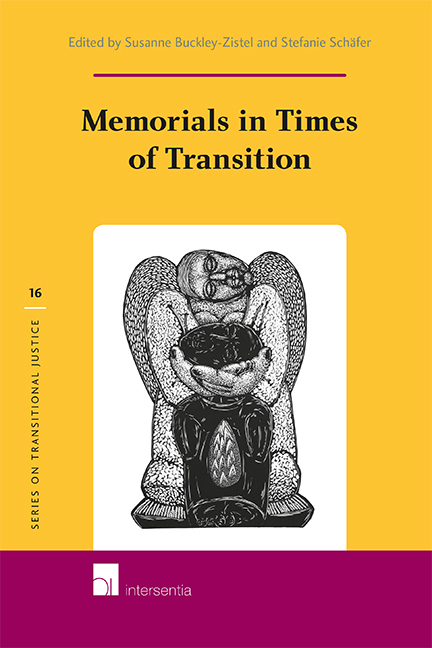Chapter 1 - Memorialisation in Post-conflict Societies in Africa: Potentials and Challenges
Published online by Cambridge University Press: 16 December 2020
Summary
In January 2012, the African Union Human Rights Memorial (AUHRM) was unveiled as a part of the new African Union (AU) headquarters in Addis Abba, Ethiopia. The memorial forms a part of the new AU precinct built at the site of a former prison, Alem Bekagn, which gained notoriety as a site of massacre and detention during the period of the Italian occupation in 1936, and the Red Terror period from 1977 to 1979. The AUHRM, initially built with the goal to commemorate the Ethiopian Red Terror, the Rwanda Genocide, Apartheid in South Africa, colonialism and the slave trade aims to, in the future, expand to include and acknowledge mass atrocities in other countries on the continent. At the inauguration of the memorial, Professor Andreas Esthete, Chairman of the Interim Board of the AUHRM, noted
what is being singled out for particular attention are serious crimes for which, above all, we ourselves are to blame… African states and governments collectively resolved to honor the memory of those lost, innocent African lives. What is being recognized at this site today is a deep moral fact about ourselves that no emergent generation of Africans can ever afford to forget […] In sum, the Memorial is a standing symbol of Africa's commitment to justice.
The AUHRM is just one example of the increased role that memorialisation has begun to play in post-conflict societies. Not only does the AUHRM exemplify the increased political recognition of, and commitment to use, memorialisation as a means to recognise victims of mass atrocity at a regional level but it also highlights the increased role of memorials in broader transitional justice processes where memorialisation has come to fill in some of the gaps that cannot be fully addressed by formal transitional justice mechanisms such as prosecutions. While memorials have almost always been a part of the public landscape, the role of memorialisation as a symbol of recognition of suffering and a form of reparations for victims gained political and social capital following the Holocaust as the world attempted to come to terms with mass atrocity, the scale of which was never before seen in modern times.
- Type
- Chapter
- Information
- Memorials in Times of Transition , pp. 29 - 46Publisher: IntersentiaPrint publication year: 2014
- 6
- Cited by



